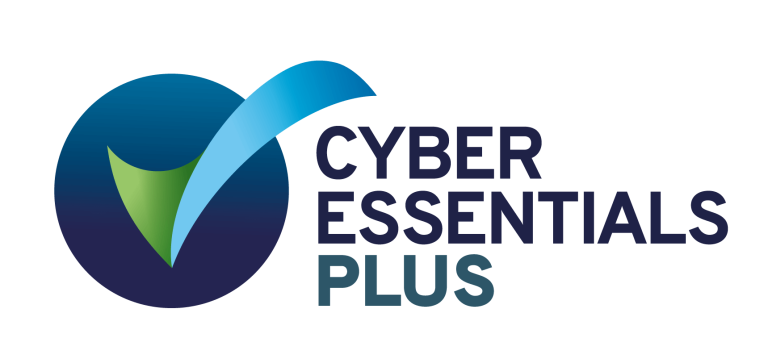Managing fatigue is a critical aspect of ensuring safety and productivity in the rail industry. Fatigue doesn’t just lead to decreased performance; it can significantly increase the risk of accidents, particularly in safety-critical roles. This is where a Fatigue Risk Management System (FRMS) comes into play. But what exactly are the elements of an FRMS, and how can they help you manage fatigue effectively within your team?
In this guide, we’ll break down the key elements of an FRMS, providing practical insights for rail industry managers who are responsible for safeguarding the well-being of their staff. By understanding and implementing these elements, you can create a safer, more efficient working environment.
Understanding the Importance of an FRMS in the Rail Industry
Why Fatigue Management Matters
In the rail industry, employees often work in demanding environments that require constant vigilance and quick decision-making. Fatigue can impair these abilities, leading to serious consequences. For example, a fatigued train driver might miss a signal, or a maintenance worker could make a critical error while servicing equipment.
The Role of an FRMS
A Fatigue Risk Management System (FRMS) is designed to address these challenges by providing a structured approach to managing fatigue risks. Unlike traditional methods, which might only involve setting work-hour limits, an FRMS takes a holistic view of fatigue, considering various factors that contribute to it and implementing strategies to mitigate those risks.
The Core Elements of an FRMS
1. Risk Assessment and Identification
The first step in any FRMS is to identify and assess the risks associated with fatigue. This involves understanding the factors that contribute to fatigue within your organisation and how these factors can impact safety and performance.
Assessing Fatigue Risks
Risk assessment should consider a range of factors, including:
- Work schedules: Irregular hours, night shifts, and extended working periods can all contribute to fatigue.
- Workload: High levels of physical or mental demand can increase fatigue levels.
- Environmental factors: Noise, lighting, and temperature can affect alertness and contribute to fatigue.
By thoroughly assessing these risks, you can develop a clearer picture of where fatigue is likely to occur and how it might impact your operations.
2. Preventive Measures
Once you’ve identified the risks, the next element of an FRMS is implementing preventive measures to reduce the likelihood of fatigue occurring. These measures are proactive steps that help to minimise fatigue before it becomes a safety issue.
Developing Effective Prevention Strategies
Preventive measures might include:
- Designing work schedules that minimise fatigue, such as avoiding back-to-back night shifts or ensuring adequate rest periods between shifts.
- Limiting overtime to prevent excessive working hours, which can lead to cumulative fatigue.
- Providing training for employees on the importance of sleep hygiene and how to manage fatigue effectively.
3. Monitoring and Reporting
Even with preventive measures in place, it’s essential to continuously monitor fatigue levels within your workforce. This allows you to identify when fatigue is becoming a problem and take corrective action before it leads to an incident.
Monitoring Tools and Techniques
Monitoring can involve a combination of:
- Self-reporting: Encouraging employees to report when they feel fatigued or believe their performance is being affected.
- Wearable technology: Using devices that track sleep patterns, alertness levels, and other indicators of fatigue.
- Regular assessments: Conducting periodic checks to assess fatigue levels, such as through alertness tests or health assessments.
In addition to monitoring, it’s important to have a robust reporting system in place. Employees should feel empowered to report fatigue-related issues without fear of reprisal, and these reports should be taken seriously and acted upon promptly.
4. Control Measures
When monitoring reveals that fatigue is becoming a problem, control measures must be implemented to manage and mitigate the risk. These are the steps you take to address fatigue once it has been identified.
Implementing Control Measures
Control measures might include:
- Reassigning tasks: If an employee is fatigued, consider reassigning them to a less critical task or providing them with additional support.
- Adjusting schedules: Temporarily altering work schedules to allow for more rest and recovery time.
- Providing additional breaks: Ensuring that fatigued employees have the opportunity to take short breaks to rest and recover during their shifts.
5. Continuous Improvement
An effective FRMS is not static; it should be a continuous process of improvement. This involves regularly reviewing and updating your fatigue management strategies to ensure they remain effective as your organisation evolves.
Learning and Adapting
Continuous improvement can be achieved by:
- Analysing incident reports: Reviewing any fatigue-related incidents or near-misses to identify areas for improvement.
- Seeking employee feedback: Regularly gathering feedback from employees on the effectiveness of the FRMS and any additional support they might need.
- Updating training: Keeping training programmes up to date with the latest research and best practices in fatigue management.
6. Integration with Safety Management Systems
Finally, an FRMS should be integrated with your broader Safety Management Systems (SMS). This ensures that fatigue management is aligned with other safety processes and that data flows freely between different parts of the organisation.
Aligning FRMS with SMS
Integration might involve:
- Using common reporting tools: Ensuring that incident reporting systems used for general safety issues also capture fatigue-related data.
- Coordinating safety audits: Including fatigue management as a key focus area in regular safety audits and assessments.
- Aligning policies: Making sure that fatigue management policies are consistent with other safety and health policies within the organisation.
Practical Tips for Implementing an FRMS
Tailoring the FRMS to Your Organisation
There’s no one-size-fits-all solution when it comes to fatigue management. Your FRMS should be tailored to the specific needs of your organisation, taking into account the size of your workforce, the nature of the work, and the specific risks associated with your operations.
Customising Your Approach
For example:
- Smaller organisations might focus on simpler, more direct approaches, such as improving work schedules and providing basic fatigue training.
- Larger organisations might invest in more sophisticated monitoring tools and develop comprehensive training programmes tailored to different roles within the company.
Engaging Employees in the Process
Successful fatigue management requires active participation from employees. They are the ones on the front lines, and their input is invaluable in designing and implementing effective fatigue management strategies.
Encouraging Employee Involvement
To engage employees:
- Communicate openly about the importance of fatigue management and the role of the FRMS.
- Involve them in risk assessments and the development of preventive measures.
- Provide regular feedback opportunities so they can share their experiences and suggest improvements.
Staying Compliant with Regulations
In the UK, managing fatigue is not just a best practice—it’s a legal requirement. Ensure that your FRMS complies with relevant regulations, such as those set out by the Health and Safety Executive (HSE) and the Railways and Other Guided Transport Systems (Safety) Regulations 2006 (ROGS).
Keeping Up to Date with Legislation
Stay informed about any changes to legislation that might affect your fatigue management practices, and be prepared to adapt your FRMS as necessary to remain compliant.
Building a Safer Future with Effective Fatigue Management
Managing fatigue is a critical aspect of ensuring safety and efficiency in the rail industry. By understanding and implementing the core elements of an FRMS—Risk Assessment, Preventive Measures, Monitoring and Reporting, Control Measures, Continuous Improvement, and Integration with SMS—you can significantly reduce the risks associated with fatigue.
Remember, an FRMS is not just about compliance; it’s about creating a culture where safety and well-being are prioritised. By engaging your employees, tailoring your approach to your organisation’s specific needs, and continuously improving your strategies, you can build a safer, more resilient workforce that is well-equipped to meet the challenges of the rail industry.
Common questions about key elements of a Fatigue Risk Management System (FRMS)
What are the key elements of a Fatigue Risk Management System (FRMS)?
The key elements of an FRMS are Risk Assessment and Identification, Preventive Measures, Monitoring and Reporting, Control Measures, Continuous Improvement, and Integration with Safety Management Systems (SMS). These components work together to manage and mitigate fatigue risks in the workplace.
How does an FRMS help prevent fatigue in the rail industry?
An FRMS helps prevent fatigue by implementing preventive measures such as designing work schedules that minimise fatigue, limiting overtime, and providing training on sleep hygiene and fatigue management. These steps reduce the likelihood of fatigue occurring in the first place.
Why is continuous improvement important in an FRMS?
Continuous improvement is crucial because it ensures that the FRMS remains effective over time. By regularly reviewing incident reports, seeking employee feedback, and updating training programmes, organisations can adapt their fatigue management strategies to meet evolving needs and challenges.
How should an FRMS be integrated with existing Safety Management Systems (SMS)?
An FRMS should be integrated with SMS by using common reporting tools, coordinating safety audits, and aligning fatigue management policies with other safety and health policies within the organisation. This ensures that fatigue management is part of the overall safety culture.
What role do employees play in an effective FRMS?
Employees play a vital role in an effective FRMS by participating in risk assessments, providing feedback on fatigue management strategies, and reporting fatigue-related issues. Their involvement is crucial for the success of the system, as they provide valuable insights and help ensure that the FRMS is practical and effective.


